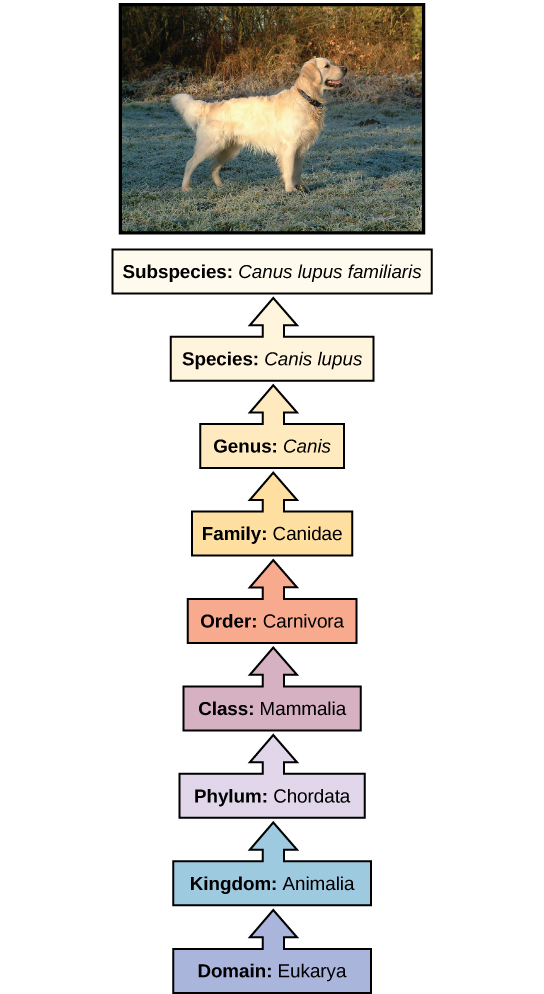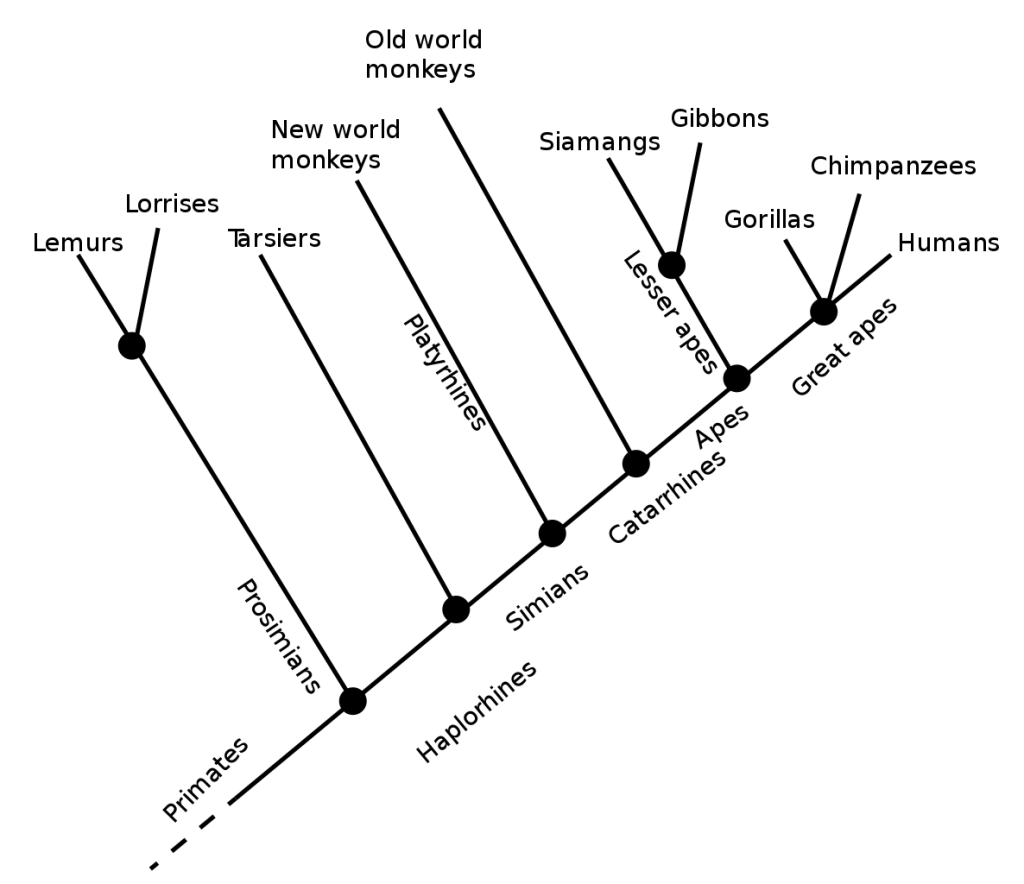4.1 Classifying Life
Across cultures and through time, humans have sought to classify the world around them. This may be for purposes of safety (poisonous vs. benign), use (food, clothing, ritual), or for our own curiosity (animal relatedness, similarity in color). Much like so many things in science, the process of classifying life has undergone a few revisions in recent centuries. Before we consider primates and apes, and us, specifically, we need to understand some key concepts related to the scientific classification of life.
Taxonomy
The process of naming and classifying organisms according to a set of rules is called taxonomy. In some cultures, taxonomic rules are based on traditional uses for plants and animals, and the existence of a classification system facilitates the transfer of that knowledge through generations. In the culture of western science, taxonomic rules are based on physical appearance as well as genetic and evolutionary relationships between species. Having a classification system allows scientists to communicate efficiently and effectively about the nature of a given organism with only a few words.
Last chapter, we learned about natural historians in the 17th century, such as John Ray (1607-1705), who developed a classification system for recognizing species. Ray and others inventoried species by arranging them into logical classes based on their appearance and characteristics. However, multiple names were given to a single species, and names were created in different languages. This also led to some species (e.g., sharks and dolphins) being categorized together, despite long, evolutionary distance.
In the 18th century, the Swedish scientist Carolus Linnaeus (1707-1778) invented the foundation of our modern system of taxonomy and classification. Linnaeus was one of the leading naturalists of the 18th century, a time when the study of natural history was considered one of the most prestigious areas of science.
Unlike his predecessors, Linnaeus adhered rigidly to the principle that each species must be identified by a set of names, which are termed the “genus” and “species,” and classified based on their similarities and differences. Although he was primarily a botanist, Linnaeus produced a comprehensive list of all organisms then known worldwide, some 7,700 plant and 4,400 animal species. He wrote one of the great classic works in the history of science, Systema Naturæ, and revised it many times.
Linnaeus borrowed the official names proposed by John Ray a century earlier – genus and species. In practice, these terms are tied together and used in combination. Most of these names are derivatives of Latin words (e.g., canis -> canine) and are italicized when typed. More recently scientists began modifying names and modern words to sound Latin (e.g., Filistata maguirei is a spider species named after Tobey Macquire). Linnaeus’s work organized organisms into logical classes based on their appearance and characteristics, and thus provides a basis for comparing different species. The solution that Linnaeus adopted was the consistent use of a two-name system called binomial nomenclature. He recognized that by giving every species could be designated by a fixed pair of names, analogous to our “family” and “given” names.
The combination of genus and species is presented as a sequence, first the genus name (plural genera, related to the word generic) and then the species name (plural species, related to the word specific), as in the binomial Homo sapiens. Moving from the point of origin, the groups become more specific, until one branch ends as a single species. For example, after the common beginning of all life, scientists divide organisms into three large categories called a Domain: Bacteria, Archaea, and Eukarya. Within each domain is a second category called a Kingdom. After Kingdoms, the subsequent categories of increasing specificity are Phylum, Class, Order, Family, Genus, and Species.
Figure 4.1 demonstrates this classification system for the domestic dog (Canis lupus familiaris). Note that this diagram considers dogs to be a subspecies of wolf (lupus). An increasing number of taxonomic systems are beginning to include sub and supra designations to account for intermediate steps between the larger taxonomical categories. For example, in primates, there are two suborders: Strepsirrhini and Haplorrhini. We will cover those in more detail shortly.

Phylogenetics Trees
A phylogenetic tree is a diagram used to reflect evolutionary relationships and connections among organisms or groups of organisms. Scientists consider phylogenetic trees to be a hypothesis of the evolutionary past based upon fossil evidence, genetic analysis, and physiology. In other words, a “tree of life” can be constructed to illustrate when different organisms evolved and to show the relationships among different organisms.
Unlike a taxonomic classification diagram, a phylogenetic tree can be read like a map of evolutionary history. Many phylogenetic trees have a single lineage at the base representing a common ancestor. Scientists call such trees “rooted,” which means there is a single ancestral lineage (typically drawn from the bottom or left) to which all organisms represented in the diagram relate.
In a rooted tree, the branching indicates evolutionary relationships. The point where a split occurs, called a branch point, represents where a single lineage evolved into two distinct new ones. The diagram in Figure 4.2 can serve as a pathway to understanding evolutionary history of primates. The pathway can be traced from the primates to specific groups of primates (e.g., great apes) by navigating through the evolutionary branches between the two points. Also, by starting with a single group and tracing back towards the “trunk” of the tree, one can discover that group’s ancestors, as well as where lineages share a common ancestry. Phylogenetic trees can be used to study entire groups of organisms or focus on specific orders or genera.

To further unpack phylogenetic trees, watch this Khan Academy video. Pay particular attention to when a branch is created in the tree and what the branch says about the subsequent species on a phylogenetic tree. Also notice, as a species evolves, is does not lose its connection to prior, ancestral species. Rather, it carries many of those genes forward in dormant forms. This is why some animals develop vestigial tails or other atypical morphological traits.
the classification of something, especially organisms.
a naming system in which two terms are used to denote a species of living organism, the first one indicating the genus and the second the species.
secondary or below, especially in hierarchy; subspecies or subadult.
above or before, especially in hierarchical systems; suprafamily.
a diagram that depicts the lines of evolutionary descent of different species, organisms, or genes from a common ancestor.

